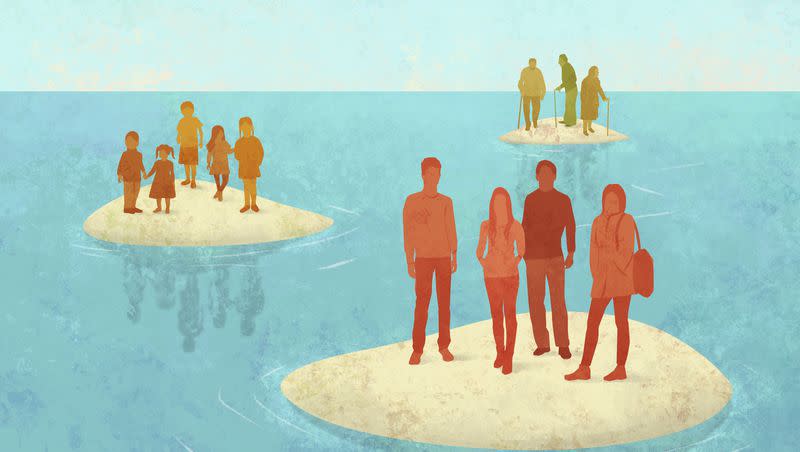Perspective: How age silos hurt everyone

Not long ago, I attended a college reunion for the first time. And while I enjoyed catching up with some old friends, I missed seeing people who didn’t graduate in the same year. Who made up this conceit, I wondered, where we only associate with people who are the exact same age as us? Wouldn’t it make just as much sense to have a reunion by dorm every few years, or for different majors or campus activities?
Free-range parenting expert Lenore Skenazy has been thinking along the same lines. In a recent post on her Let Grow website, Skenazy explains why parents who want successful, well-adjusted kids should consider the benefits of exposing them to people of multiple ages.
She tells the story of Mike Wimmer, “a prodigy from North Carolina who just graduated college at age 14. He also runs two tech companies and is trying to figure out how to curb the population of invasive lionfish in the Caribbean and beyond.”
Mike’s parents attribute his success in part to his regular contact with people who were not the same age. They let him order in restaurants when he was 3 or 4. Though some parents of academically gifted kids might worry about putting their children with older kids, the Wimmers saw it as a great opportunity. Despite research showing that mixed-age relationships are helpful for kids’ development, making them less likely to be lonely, this kind of interaction is happening less frequently.
The most obvious reason for this is smaller families. Kids used to have siblings and cousins who were older and younger than them. Today a lot of parents worry about younger children taking their cues from older children. But maybe they’re just hanging around the wrong older children. Watching older kids will help younger ones learn physical skills like throwing a ball or riding a bike, and emotional skills like how to win and lose without making everyone else mad. You want social emotional learning? Try playing neighborhood-wide games of “capture the flag” with kids from ages 4 to 13.
And older children used to learn empathy having younger relatives hanging around. They would have to slow down and explain things or include younger children in games when they might otherwise have wanted to forge ahead.
Related
Not only do natural environments today fail to integrate kids by age, our created environments do, too — particularly school. At young ages, kids are separated strictly by age. In earlier generations it used to be common for kids to skip a grade here or there, but now that’s rare because people frown on the social barriers. Imagine what would happen in one-room schoolhouses. Kids would be grouped by ability, and older students would often help younger ones.
Even in day care settings there are strict regulations about having 2- and 3-year-olds in the same area as babies. As with so many restrictions, the risks here are minimal, but people worry about the legal liability. Then they create environments that are detrimental to all.
And don’t even get me started on college. If I didn’t babysit for faculty children in college, I could have gone years without seeing any young kids. Is it any wonder, by the way, that many women who become mothers at 30 or older feel as if they have no idea what to do with an infant?
Our religious institutions are not much better. Some churches are good about tolerating the disruptions of babies and small children, but there are still plenty that are not. My own synagogue has babysitting and separate children’s services. I understand that each institution’s leadership is trying to balance the desire of adults to fulfill their religious obligations with some peace and space for spiritual contemplation. But kids get the impression that faith is a boring thing that grown-ups do.
Speaking to adults is now a skill that a lot of schools need to teach. Young people need to know how to look adults in the eye, shake their hand and so forth. The idea is that these things will be necessary when they grow up and want to get a job. But what about now? Shouldn’t kids be able to speak with their teachers without being overcome by anxiety?
Of course, teenagers have been mortified by adult interaction since as long as there have been teenagers (not that long really). But if children were asked to interact with adults more regularly, maybe this wouldn’t be such a big deal. And really, we are putting too much of the onus here on children. It is adults who are separating society by age. Maybe it’s time for a new approach.
Naomi Schaefer Riley is a senior fellow at the American Enterprise Institute, a Deseret News contributor and the author of “No Way to Treat a Child: How the Foster Care System, Family Courts, and Racial Activists Are Wrecking Young Lives,” among other books.

